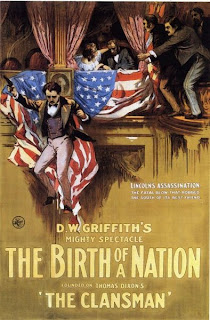
The history of Presidents’ Day goes back to 1880, when Washington’s Birthday, February 22nd, was celebrated as a federal holiday within the District of Columbia. Washington Day was the first holiday created to honor an American in United States history. The holiday spread to all federal offices nationwide in 1885. On January 1, 1971, the holiday shifted from February 22nd to the third Monday in February by the Uniform Monday Holiday Act. This made the “Washington’s Birthday” holiday somewhat of a fraud as it was no longer celebrated on Washington’s actual birthday. Attempts to officially change the name of the holiday to “Presidents’ Day” initially stalled, but after advertisers began to recognize the day as “Presidents’ Day,” most states followed suit. The day shifted from a holiday in which Americans might pay tribute to Washington, to a day that pays tribute to the presidency itself. Most states interpret the holiday to honor two of our greatest presidents, George Washington and Abraham Lincoln, as their birthdays both fall in February (Lincoln’s birthday is February 12th).
Interestingly, because the states have been left to acknowledge the holiday in their own way, it is celebrated differently across the country. For example, Alabama honors both George Washington and Thomas Jefferson on Presidents’s Day (even though Jefferson’s birthday is in April). Massachusetts also honors other presidents besides Washington, namely those with ties to the state including John Adams, John Quincy Adams, Calvin Coolidge and John F. Kennedy. In New Jersey, Illinois, Missouri and Connecticut, Lincoln’s birthday is still celebrated as a state holiday in addition to the federal holiday of Washington’s birthday.
We might just think of Presidents’ Day as a day off of work or school (if you’re lucky), however, it really is a day to honor the presidency and all those in public service. To that end, here are some recipes to help you celebrate. I may attempt the Lincoln log, and I’ll get back to you on how that goes…
Until then….Happy Presidents’ Day!
To learn more about our nation’s presidents, visit the White House’s presidential database.
Lincoln Log Cake
1/2 c. flour
¼ c. unflavored cocoa powder
1 tsp. salt
4 eggs, room temperature
¾ c/ sugar
2 tsp. vanilla
Whipped cream
Mix eggs, sugar and vanilla. Beat at high speed until thick and light; approximately 10 minutes. Fold in dry ingredients. Bake in a 15 x 10 inch jelly roll pan lined with wax paper and greased at 350 degrees for 20-25 minutes. Remove from oven and loosen sides of pan.
Turn out onto clean towel sprinkled with confectioners' sugar. Peel off wax paper - trim edges and cool 5 minutes. Roll up cake in towel for at least 1 hour. Unroll and spread with whipped cream. Roll up again. Place on serving dish. Frost with chocolate frosting. Run tines of fork length of log for bark effect. Cut in crosswise slices.
George Washington Recipe
Cherry Thumbprint Cookies
1 teaspoon vanilla
2 sticks butter or margarine
2 egg yolks
1/2 cup brown sugar
2 cups flour
1/2 teaspoon salt
maraschino cherries
Preheat oven to 350 degrees. In a large bowl, mix together the vanilla, butter, egg yolks and brown sugar until creamy. Add the flour and salt and mix well.
Have the children roll the dough into 1" balls and place them on greased cookie sheets. Have the children make a thumbprint in each ball and then place a maraschino cherry in each thumbprint. Bake for 8 to 10 minutes. (Makes about 3 dozen cookies)




















